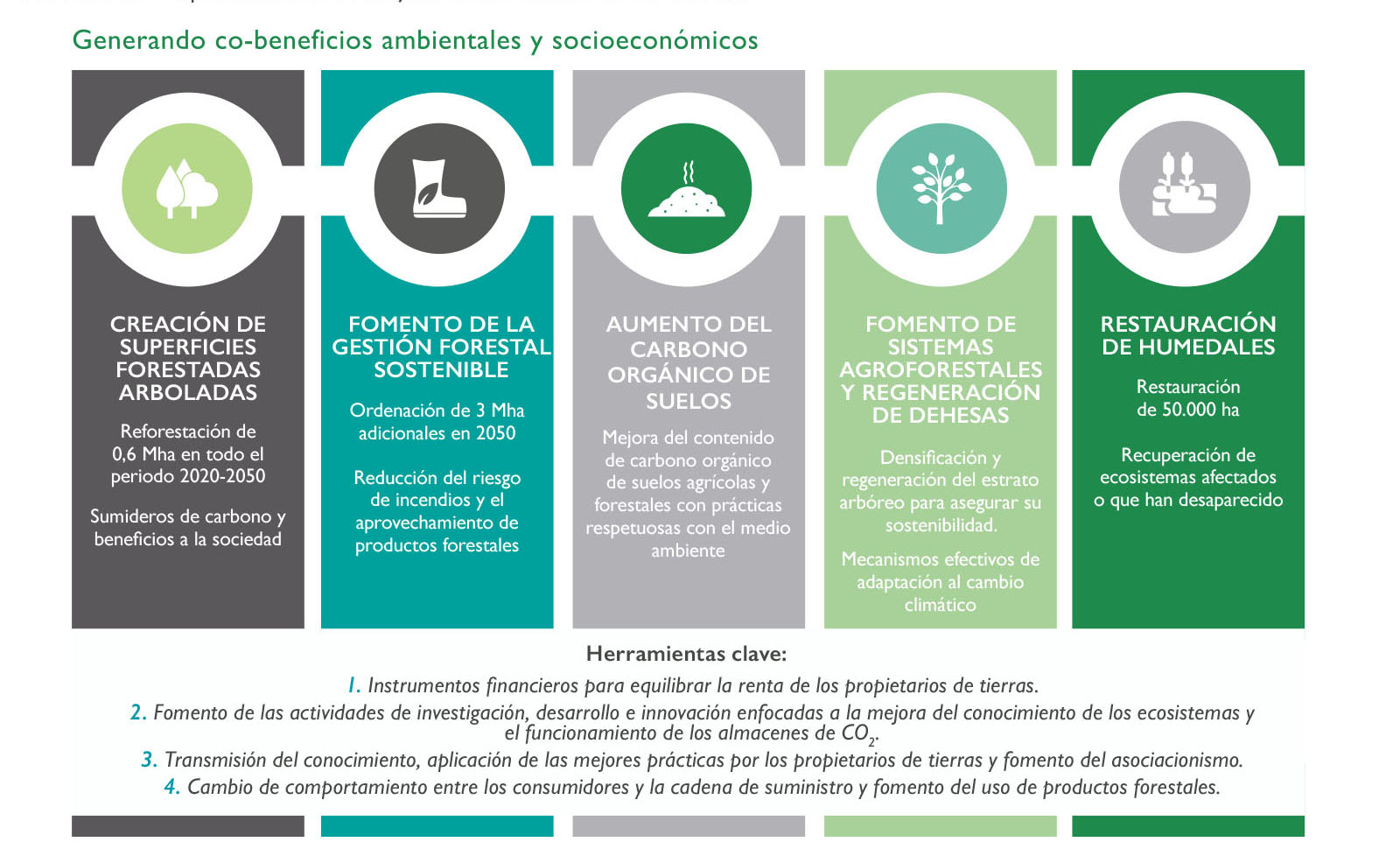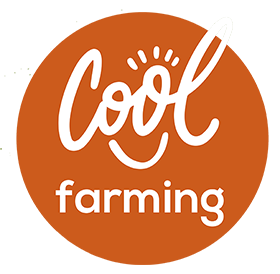The agriculture and
livestock industry
The agricultural and livestock industry acts as a natural sink through the capacity of soil and woody crops to fix carbon, which means that it will play a key role in achieving an emission-neutral economy. In this sense, public administrations will promote practices that encourage carbon fixation in crops and soil.


The agricultural area in which productive and sustainable agriculture is practiced reflects the three dimensions of sustainable production, which are the environmental, economic and social dimensions. Land under productive and sustainable agriculture will be the farms and associated agricultural areas that meet the sustainability criteria of the selected sub-indicators in these three dimensions. This indicator will measure progress towards achieving SDG target 2.4.
Sustainable agriculture is at the heart of the 2030 Agenda, although many of the SDGs address agriculture-related issues, the SDG indicator 2.4.1 focuses entirely on this sector.
SDG indicator 2.4.1, which is defined as the proportion "of agricultural land area in which productive and sustainable agriculture is practiced", is similar. In the past, it was defined primarily in terms of environmental criteria: If soil was poor or water was not properly managed, a farm might have been considered unsustainable.
In recent years, however, it has become clear that sustainability goes much further, encompassing economic and social dimensions and putting farmers at the center. If a farm is not economically stable and resilient to external shocks it cannot be sustainable.
Given that the Strategy's objective is to mitigate 90% of total gross emissions compared to 1990, natural sinks will have to absorb at least the remaining 10%. The main lines of work identified for the development and strengthening of sinks are as follows:
- Creation of forested wooded areas. These are the main carbon sinks and help to increase biodiversity. They can have a very positive impact on employment.
- Promoting forest management. Sustainable management of national forests will provide greater growth of these ecosystems in the future. This will also play an important role in reducing the risk of forest fires.
- Restoration of wetlands. This will involve the recovery of this type of ecosystems that were deteriorated or completely lost.
- Promotion of agroforestry systems and regeneration of pastures through the densification and regeneration of tree layers to ensure their sustainability. This promotes effective mechanisms for climate change adaptation.
- A set of measures aimed at improving the organic carbon of agricultural and forestry soils, increasing carbon sequestration while generating more resilient systems and other co-benefits in terms of food security, biodiversity, and regulation of the hydrological cycle, among others.
FIGURE 4.1 Opportunities for improving carbon sinks

Source: Spanish Ministry for Ecological Transition and the Demographic Challenge, 2020.
At Cool Farming we disagree with 4 of these 5 objectives, and we believe that that planting trees is not the solution.
A tree needs at least one year to store 20 kg of CO2. However, when a tree reaches maturity it becomes a very useful tool to extract carbon from the atmosphere. When forests burn, are cut down or decompose naturally, trees release the carbon absorbed during their lifetime. The cycle is very complex and it is difficult to establish what part of the emissions is natural and what part is due to human actions.
We highlight some of the most important negative impacts:
- Planting a forest where there used to be grasslands and pastures can alter the water cycle and freshwater availability, increasing the risk of fires or affecting biodiversity.
- Draining peatlands or wetlands to build forests will eventually release the large amounts of carbon that these ecosystems naturally (and very efficiently) store.
- Reforesting areas requires a large maintenance investment and generally no one pays attention to its cost, and forests end up being neglected due to a lack of economic resources.
- Reforesting degraded forests is a good idea, but it can increase the vulnerability of the communities that depend on them if their rights are not taken into account.

